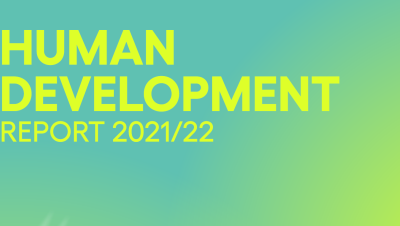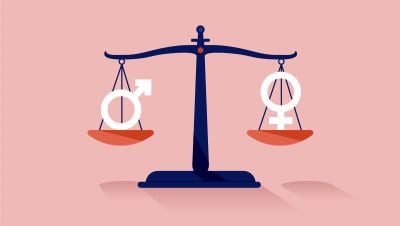More often than not, youth come to our attention as a result of their association with crisis—be it a crisis of unemployment, of involvement in violence, or susceptibility to early parenthood or sexually transmitted infections and disease. I would like to talk about this. I do not wish to challenge the idea that young people are vulnerable to risks and even producing risks to themselves and their local contexts. However, I would like to take a second look at the way that youth, risk, and vulnerability are often balled up together in a way that sees young people as the problem (or the solution)—rather than participants in societies and in a global community that are fraught with many problems.
First, who are the youth? The short answer is that it really depends. There are some important physical, cognitive, and psychosocial developments that demarcate the period of the life course that we call adolescence, which takes place roughly between the ages of 13 and 19. “Youth” is more of a social age than a developmental period. It is that transition period between the dependency of childhood and the responsibilities of adulthood. This social phase might be longer or shorter depending on the context. That said, definitions are often needed (for policy for example). The UN uses the ages between 15 and 24 as a range in which many young people are socially considered “youth.” These are guidelines. Young people may or may not fit into them based upon their gendered and socio-economic transitions in particular societies.
So what is it that makes young people vulnerable to harmful things like HIV/AIDS or participation in violence and conflict? One way to answer these questions is to think about what it means to be young—to experience rapid physical, sexual, social and emotional change. Adolescence is a time of identity formation. It is time when many people become sexually active, and take on more responsibilities. The flux and change in this period certainly increases young people’s susceptibility to all kinds of risks. If we stop there, we have a very age and stage based view of risk that connects vulnerability to a condition of being not fully mature. This is only part of the story, however. While young people are developing within their bodies and their psychosocial engagement with their world, they are also attending and exiting education, going to work, and beginning families of their own. A look at these transitions demonstrates that while bodies and minds may undergo similar developments that induce a “base-line” vulnerability for nearly all young people, there are a number of interconnected contextual influences that affect youth vulnerabilities. Among the most important are impoverishment, inequality, and social exclusion. Around the world young people are seeing their choices limited by things like economic insecurity, technological change, political uprisings, conflict and climate change.
Poverty remains one of the gravest threats to young people’s life chances in low and middle-income countries, and for a significant number of youth living in high-income countries. It manifests in a variety of ways. To name just one, food shortage has pervasive and long-lasting affects on well-being and life chances. Evidence from Young Lives a longitudinal, four-country study of childhood poverty demonstrates that food shortage at age 12 is associated with a range of impacts three years later. These include lower cognitive achievement and lower subjective well-being at age 15 ).
Young people also grow up in situations where vulnerabilities result from an unequal distribution of resources. For example, urban centers nearly always provide a greater quantity and diversity of goods, services, and opportunities than do rural areas. The extent of the disparity in developing countries can be quite significant. In Liberia, half of the high schools in the entire country are located within the greater capital city area of Monrovia. Even where education facilities do exist in rural areas, they are often located at a considerable distance from children’s homes. The perceived and actual risks of travel may delay enrolment and restrict school participation for girls in particular, which in turn causes intermittent attendance and early departure.
Finally, a good deal of vulnerability emerges from the way in which groups of people are treated by the rest of society. Socially excluded minorities are more likely to endure unequal access to resources and opportunities because of who they are, or are perceived to be. The interconnection of social exclusion, inequality, and poverty tend to reinforce one another. So for example, vulnerability is compounded if a young person is a girl, who is from a minority ethnic group, and living in a rural area. Vulnerabilities that result from entrenched social marginalization and poverty extend over the life course of young people, their families and communities, and are transmitted across generations.
The constraints, opportunities, and the means by which youth negotiate transitions into greater responsibility and adulthood have much to tell us about the conditions of the local and global communities in which they live. Youth are vulnerable not just because they are young or undergoing rapid developmental transitions. Perhaps more fundamentally, they are vulnerable because they are people who live in an unequal world where the social values and institutions that permit opportunities and possibilities of all kinds are not available to everyone.
What does this mean for policy? It means a lot of things, but what I would like to stress is that the vulnerabilities that young people experience are in many respects, part and parcel of the vulnerabilities that are produced and reproduced in their communities, their nations, and our world. It seems that responding to the risks that young people experience and present means responding to pervasive and interconnected forces that sustain poverty, reproduce inequality, and maintain social exclusion. Addressing risks and vulnerabilities associated with youth means addressing the more systemic disparities and disadvantages that diminish their life chances on local and global scales.
Abby Hardgrove is Visiting Research Associate, School of Geography and the Environment, University of Oxford.
This blog post was drawn from the Human Development Report Office 2014 Occasional Paper entitled: Youth Vulnerabilities in Life Course Transitions.
The HDialogue blog is a platform for debate and discussion. Posts reflect the views of respective authors in their individual capacities and not the views of UNDP/HDRO.
Photo by Ashtyn Renee


